Hardware Labs Nemesis 280 GTX Radiator Review
Welcome to another Extreme Rigs 280mm radiator review. Today we’ll be looking at the Nemesis® 280 GTX from Hardware Labs. It is one of 8 models available in the Nemesis® GTX® range of radiators that fall under HWLabs’ Black Ice® banner.
![]()
The Nemesis 280 GTX is a 54mm thick radiator and is one of the thick radiators in our test group. The Nemesis GTX range seems to have a reputation for being best suited for high speed fans, largely due to it’s predecessor, the Black Ice GTX (Gen Two Xtreme) which had a much higher fin count. However testing for our review of the Nemesis 360 GTX last year showed the Nemesis GTX series has a much more balanced performance spread. Note that this radiator is technically called the Black Ice Nemesis GTX, however to avoid confusion with the Black Ice GTX we will simply call it the Nemesis GTX.
In this review of the Nemesis 280 GTX we’ll take a close look at it’s construction & quality, analyze the performance data by comparing it’s results against other 280mm radiators and then conclude with a summary.
Firstly a big thanks to Hardware Labs for providing the review sample of the Nemesis 280 GTX. Since we commenced our radiator testing their commitment to our independent tests has been exemplary. Extreme Rigs couldn’t publish the reviews we do without the continued support offered by our sponsors, so a big thanks to all the crew at Hardware Labs.
Before we start we would again like to say thanks to Noctua for providing the NF-A14 Industrial PPC-2000 IP67 PWM 140mm fans. We use these fans for all our 140mm based radiator thermal performance testing because they have great static pressure which is required to get the best performance from even densest of radiator cores and of course, their proven reliability.
What’s in the Box?
The Nemesis 280 GTX sample arrived in full retail packaging. The front features an image of the radiator and Nemesis logo, along with the model number in large bold lettering.
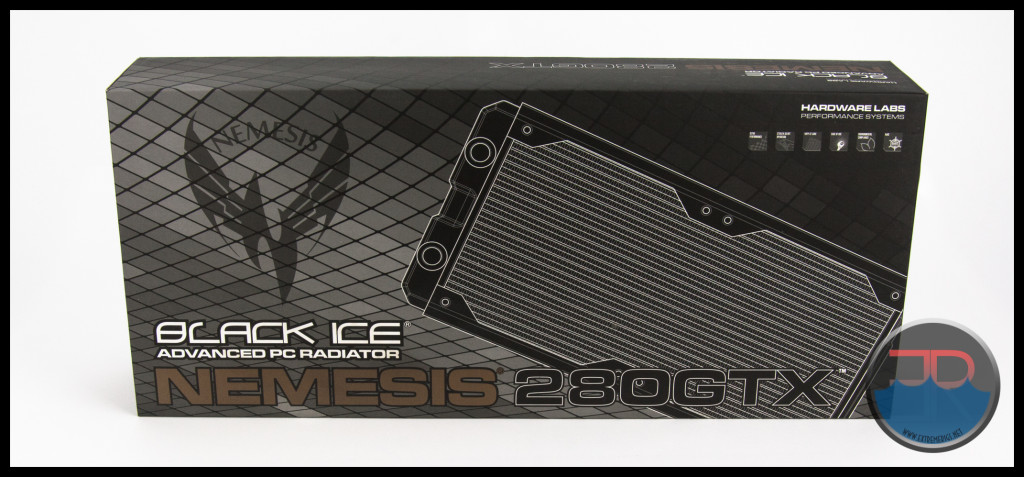 On the back is a technical drawing along with a list of features.
On the back is a technical drawing along with a list of features.
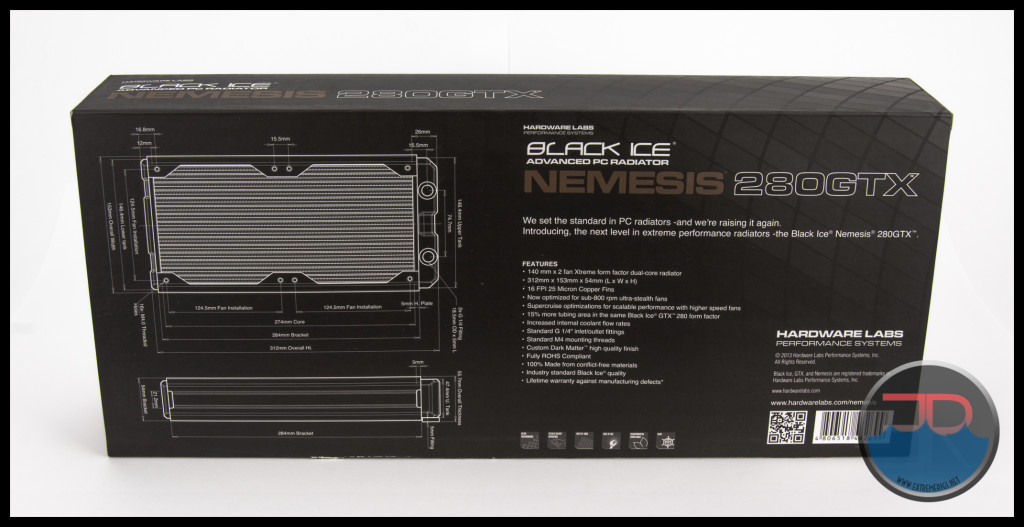
After removing the outer retail sleeve we find a sturdy cardboard box with a Black Ice® seal.
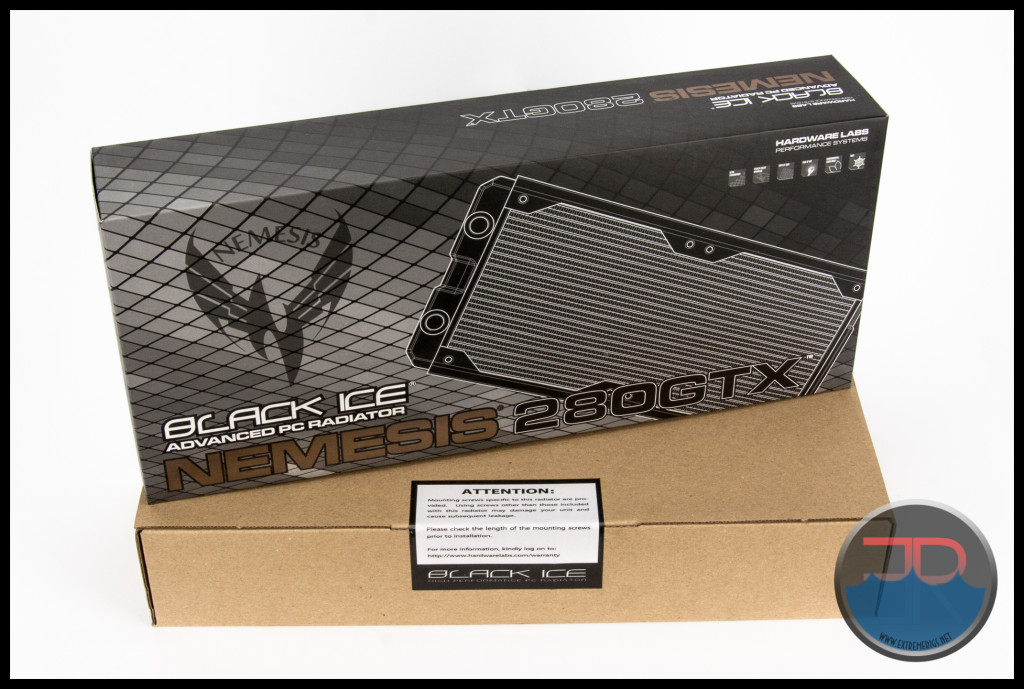
The seal advises to check screw length if using screws other than those provided, which we’ll discuss in more detail shortly.
Opening the box, we see the familiar packing layout which HWLabs use for all their radiators. The packaging is strong and secure, but it we feel it lacks a bubble wrap sleeve to avoid possible scuffing/scratches on the paint during transport.
On the right hand side the supplied accessories are placed under a lift up flap.
The accessories consist of the following:
8 x M4 x 28mm Phillips Head screws.
8 x M4 x 5mm Phillips Head screws.
As only 8 screws of each length are provided, you will need to provide an extra set of screws if you intend to install a Push/Pull fan assembly.
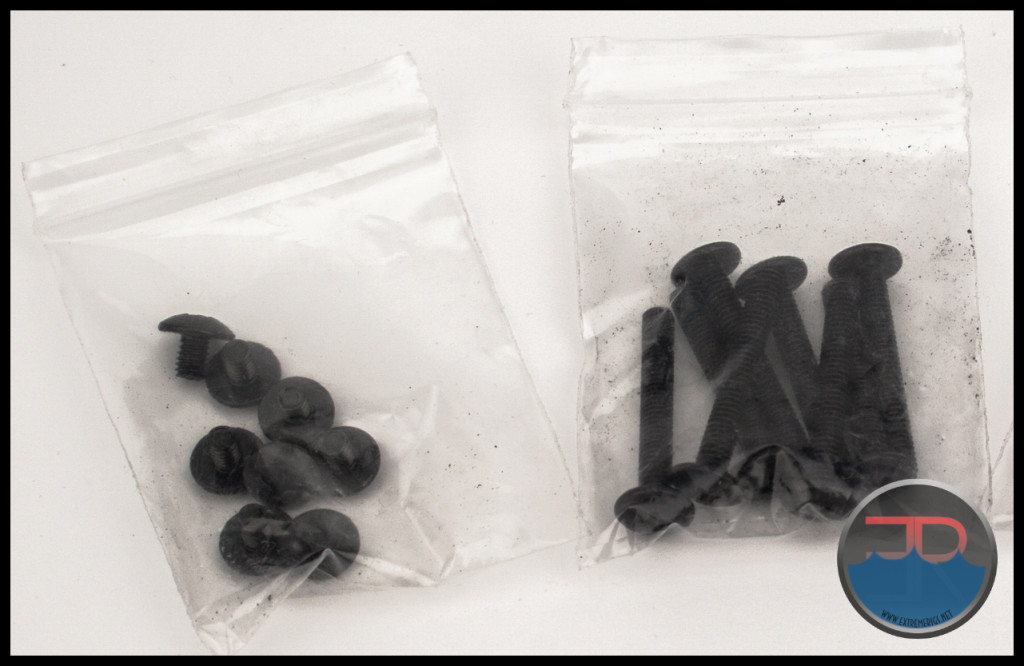
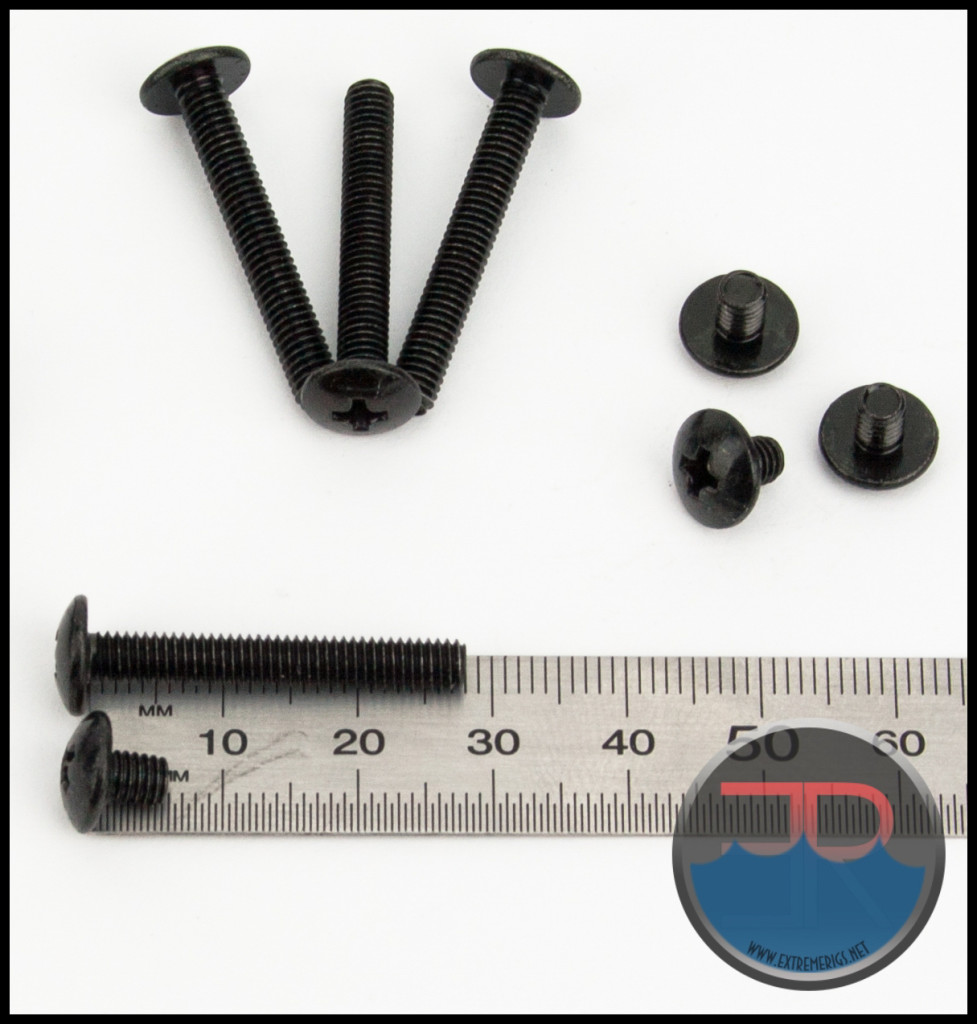 The shorter screws measure in at ~5mm and have 2 possible uses. Firstly is for directly mounting the radiator to a case panel. Alternately they could be used to attach mounting brackets for reservoirs or pumps.
The shorter screws measure in at ~5mm and have 2 possible uses. Firstly is for directly mounting the radiator to a case panel. Alternately they could be used to attach mounting brackets for reservoirs or pumps.
The longer screws are 28mm long. These are the perfect length for mounting a 25mm thick fan, however in almost all instances they are not long enough to mount a fan between radiator and case panel. If using a mounting bracket, or placing fans between the case panel and radiator, you will need to provide your own M4 screws of suitable length. In most instances M4 x 30mm screws will be suitable.
In the following photo a 30mm screw has been used to fix the fan in position with a supplied 28mm screw beside it. There is about 2mm clearance when using the 30mm screw to attach the fan, so we wonder why 30mm screws are not supplied with the radiator. If 30mm screws were supplied purchasers would have the choice to fit a fan between their case panel or directly mounted to the radiator without having to purchase any additional screws. Even better would be to inlcude 2 sets of 30mm screws to fit push/pull fans.
Onwards to technical specifications!
![]()







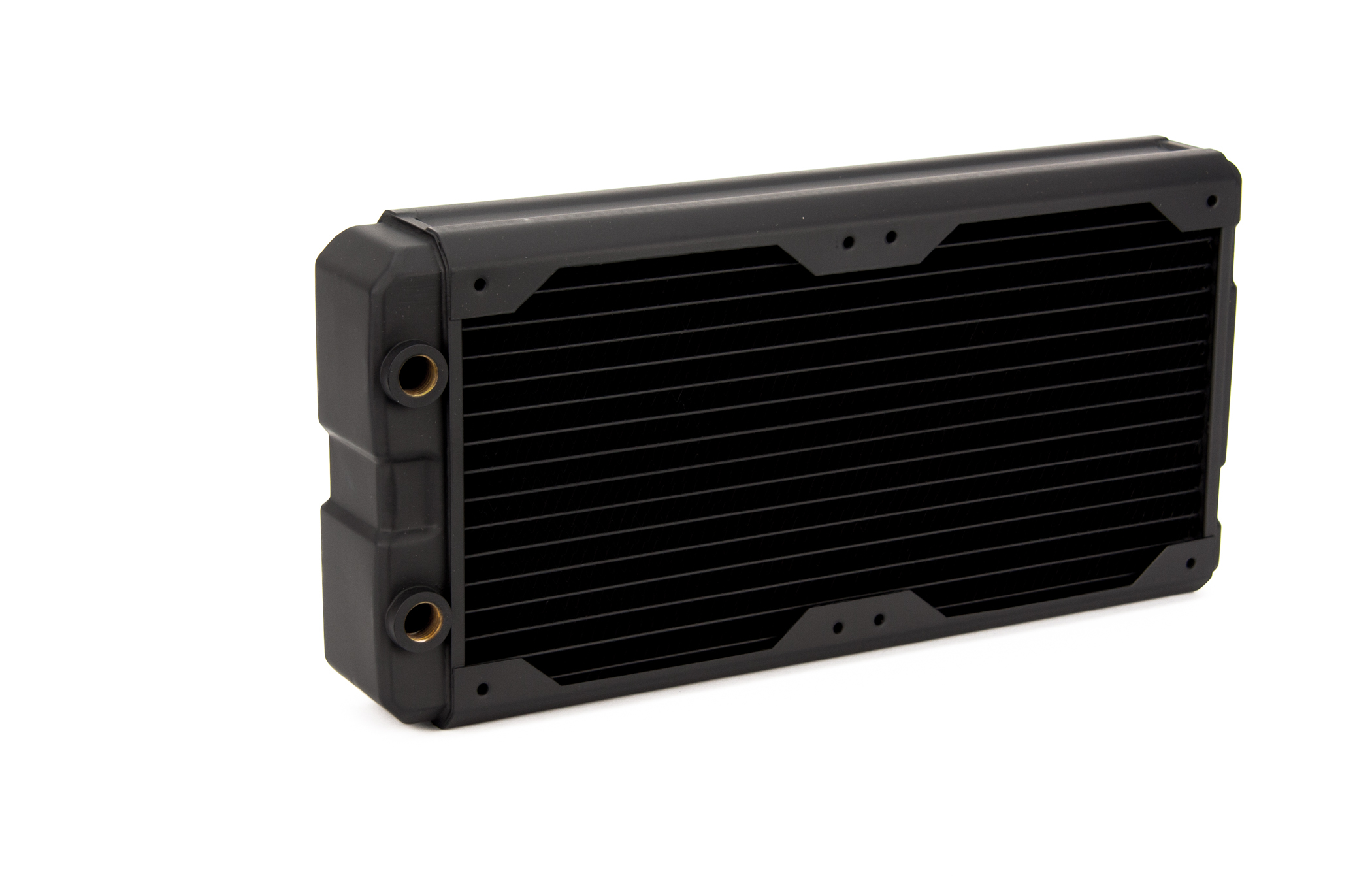

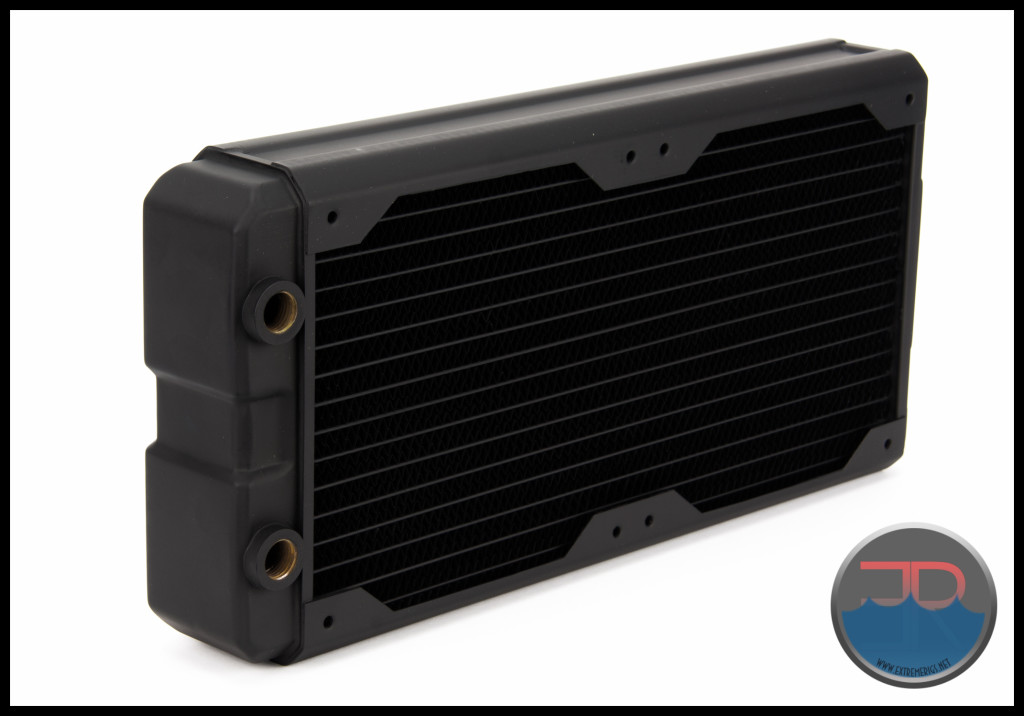

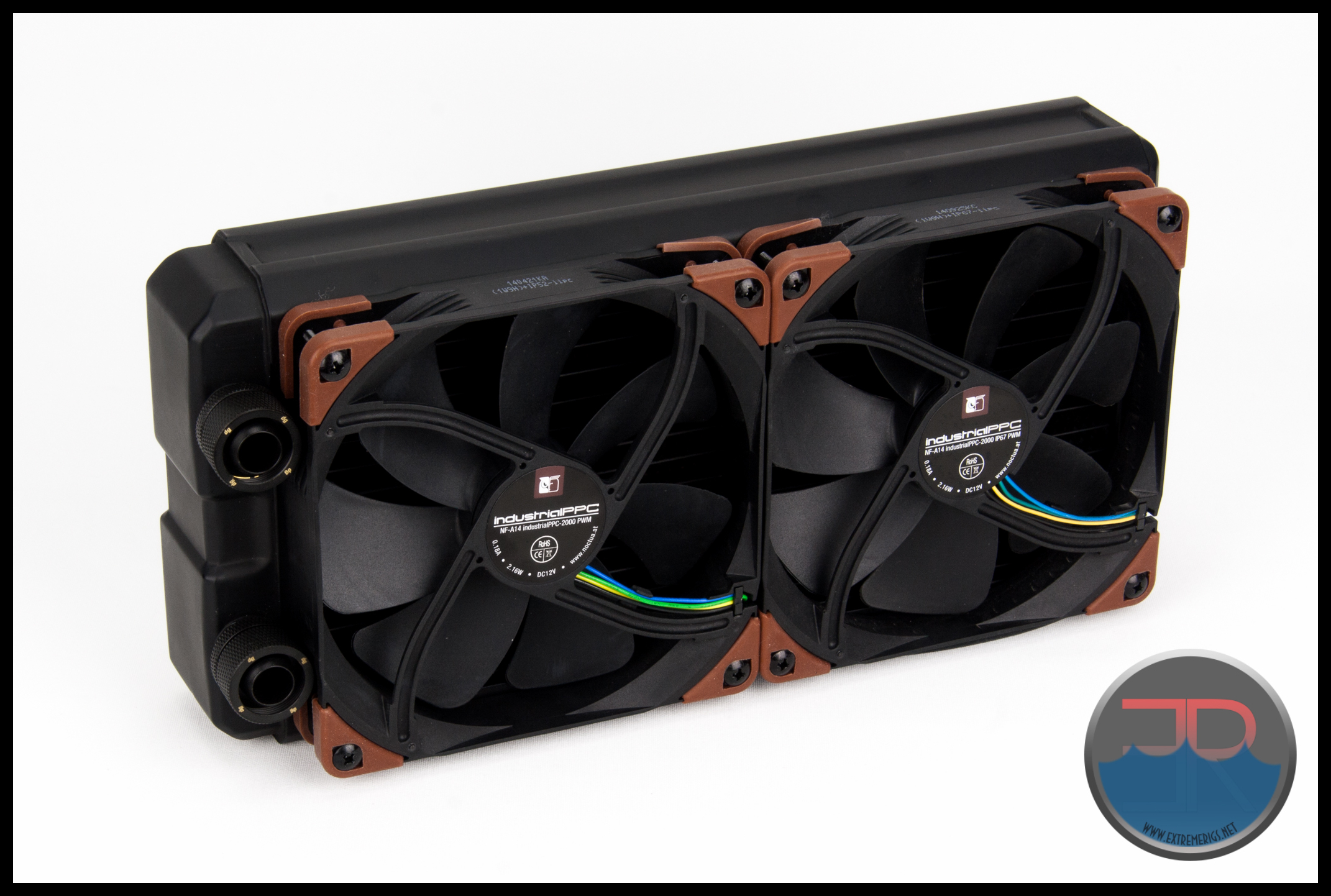
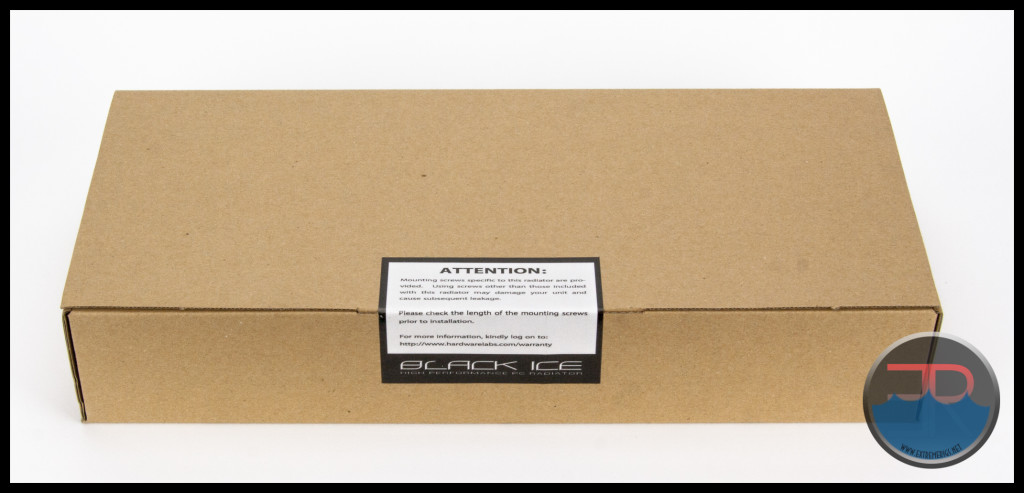
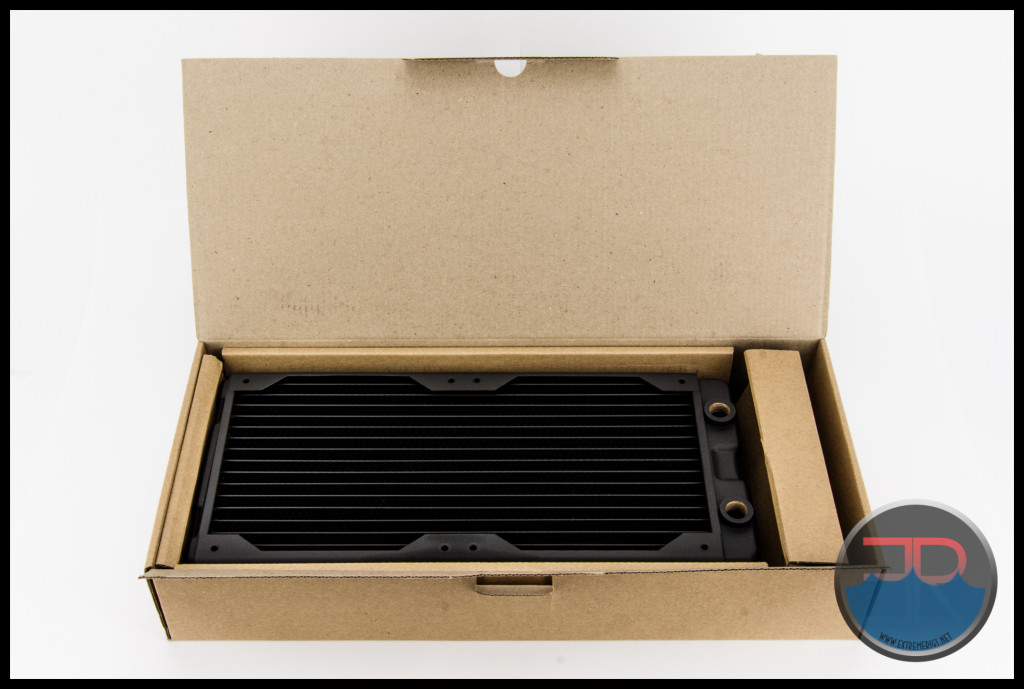
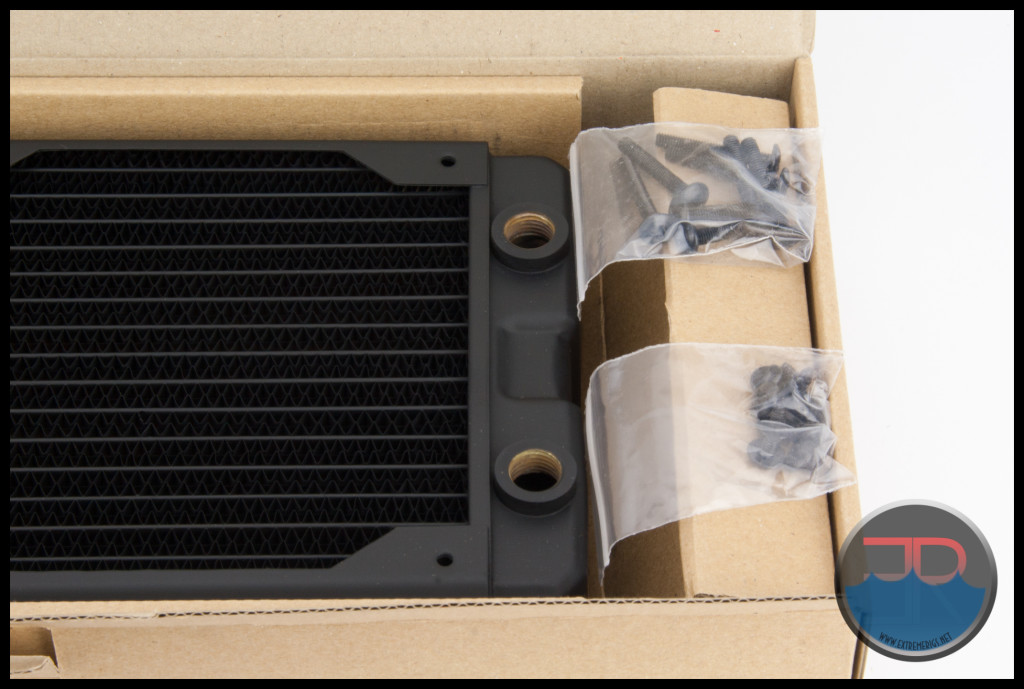
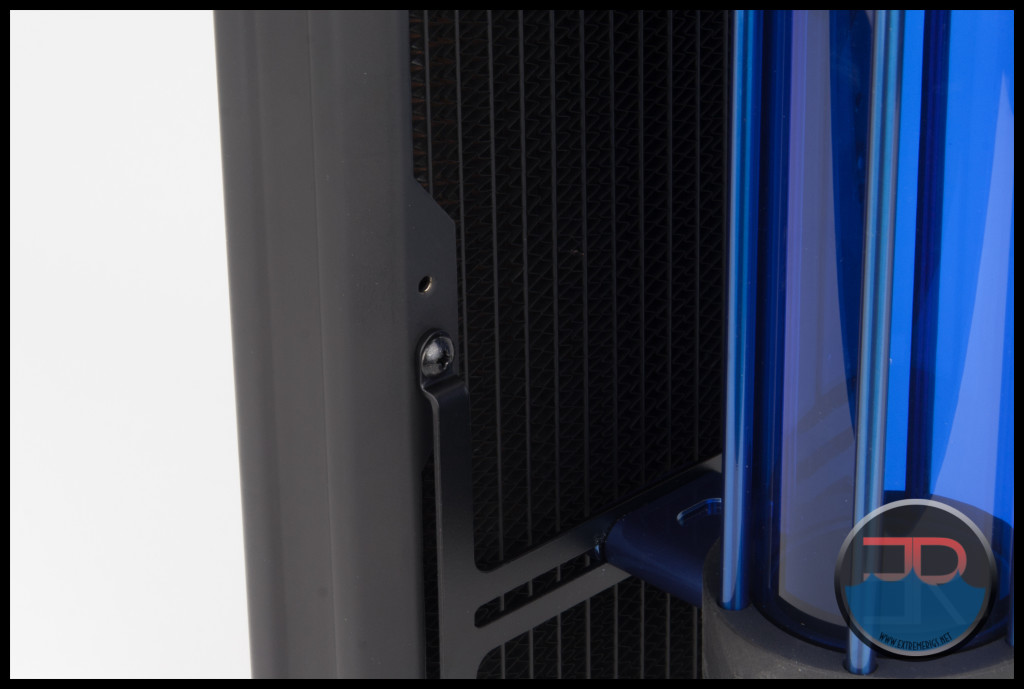
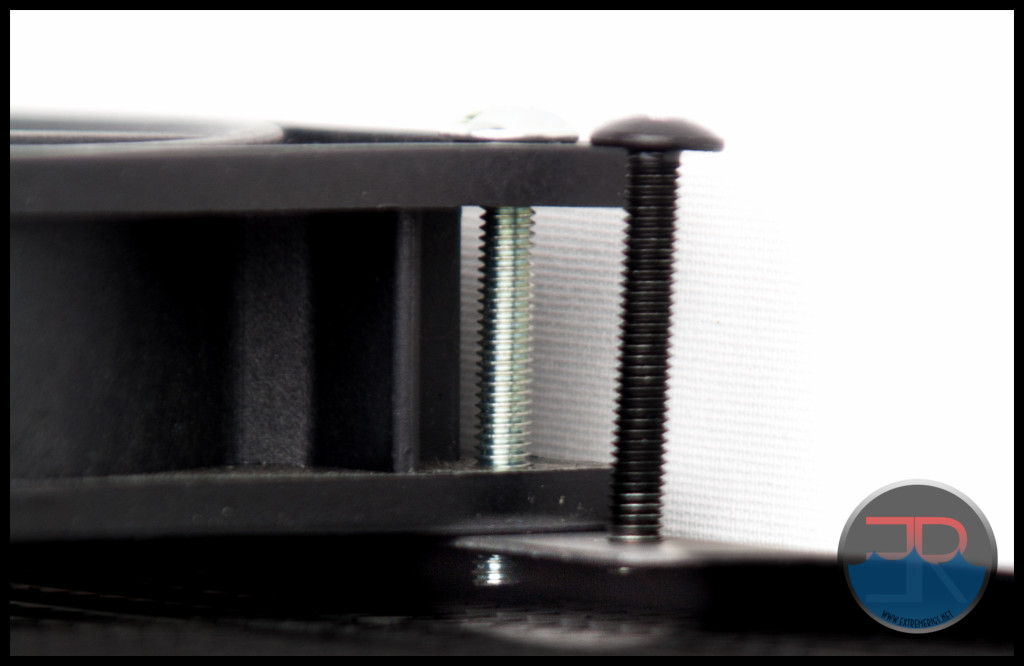



Why is such a thick rad not multiport? At least have 4 ports for easy top filling, and a temps sensor….. would help a ton.
Hey Drew – The Nemesis GTX rads have this front to back flow that makes adding alternative input/output ports quite hard because the end tank is split in half in the different way to a u-flow rad. Now that’s not to say it can’t be done with some tubes and more welding – but it would complicate things and push the price up. However ports could be added at both ends for functionality without being allowed for input/output – i.e. for filling/draining/temp sensors. This would give more functionality at least without requiring more complicated internal tubes and welding.
Comments are closed.